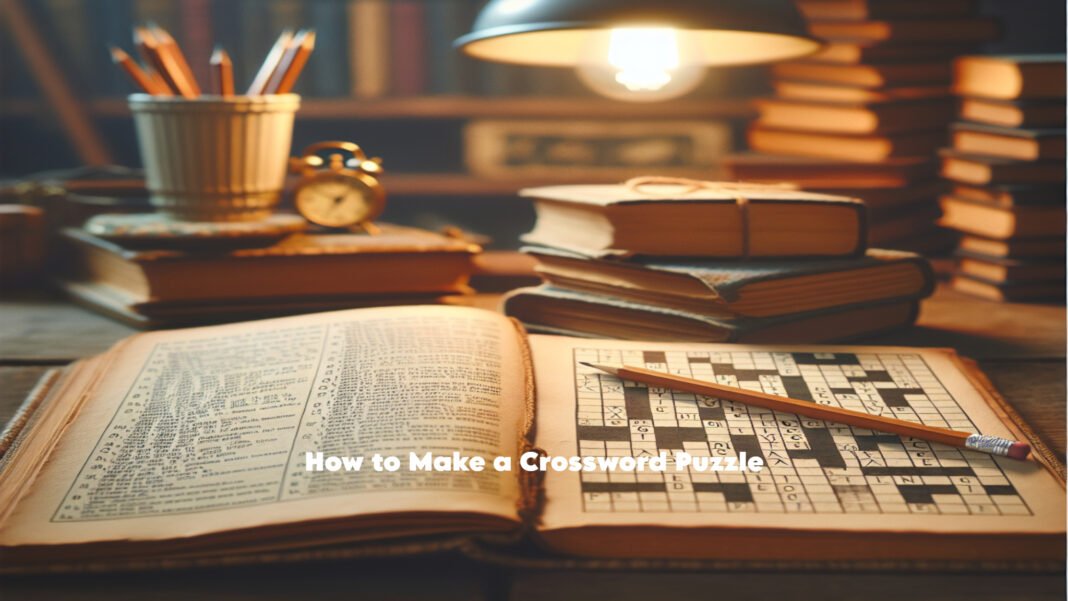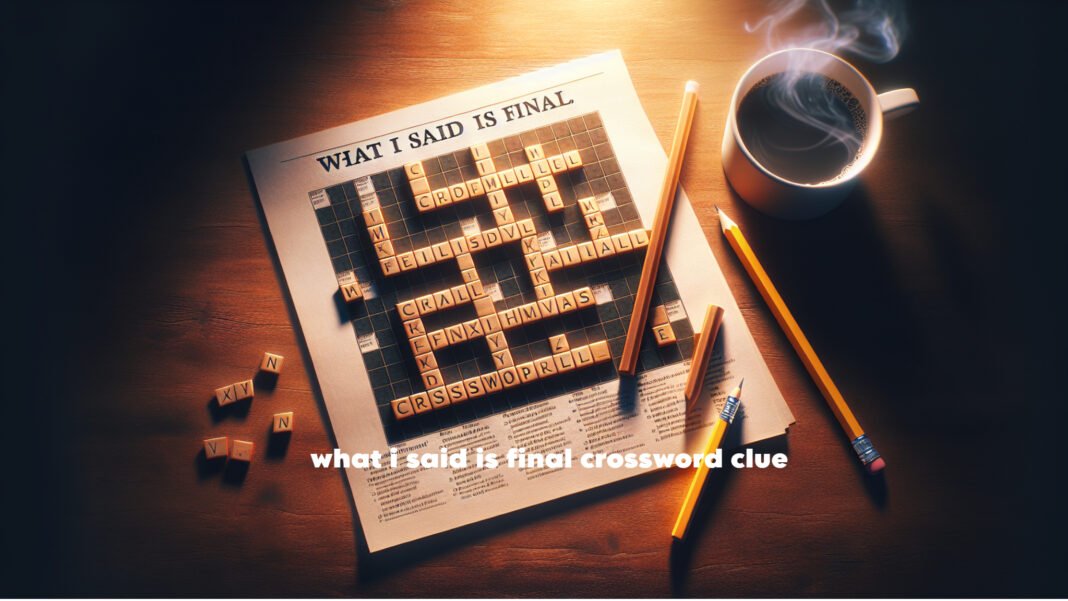Since their inception over a century ago, crossword puzzles have captured the imaginations of millions, becoming a staple of leisure and learning. The art of crafting these puzzles, particularly for beginners intrigued by the puzzle-making process, can seem daunting at first glance. This article aims to demystify the process, offering a comprehensive guide on how to make a crossword puzzle that’s both engaging and rewarding.
Embarking on the journey of creating a crossword puzzle, from understanding the basics of crossword construction to designing and filling the grid with words, requires meticulous attention to detail and creativity. Readers will discover tips for crafting clever clues, finalizing, and testing their puzzles to ensure they’re ready for the enjoyment of friends, family, or even submission to publications for a possible reward. This guide serves not only as a detailed introduction to crossword puzzle creation but also as a testament to the enduring appeal and educational potential of this beloved pastime.
Understanding the Basics of Crossword Construction
At the heart of every engaging crossword puzzle lies a carefully chosen theme, serving as the cornerstone for construction. This theme not only guides the selection of words but also unifies the entire puzzle, providing solvers with a coherent and enjoyable experience. Themes can range from simple concepts, like holidays or historical events, to more intricate wordplay and puns. It is crucial that themes are:
- Fresh and Interesting: Captivate solvers with originality.
- Narrowly Defined: Ensure clarity and focus.
- Consistently Applied: Maintain theme consistency across all puzzle elements.
Crossword puzzles are structured around an “across” and “down” grid, where each letter is part of both an across and a down word, ensuring every letter is “checked.” This fundamental rule adds to the complexity of puzzle creation but also to the satisfaction of solving. Key conventions include:
- Rotational Symmetry: The grid maintains a symmetrical pattern, enhancing aesthetic appeal.
- Black Square Distribution: Strategically placed to balance the grid and control word length.
- Word Length: A minimum of three letters, avoiding overly simplistic entries.
The New York Times crossword sets a high standard with its rotational symmetry and difficulty variation, making it an aspirational model for puzzle creators. Starting with a compelling theme, designers then proceed to craft a balanced grid, populate it with words that align with the theme, and finally, write clues that challenge yet entertain solvers. The theme not only anchors the puzzle but also precedes the fill, dictating the selection of longer themed entries and ensuring they are accessible and engaging to a wide audience.
Designing the Grid
When embarking on how to make a crossword puzzle, designing the grid is a foundational step that sets the stage for the entire puzzle. The grid is the skeleton of your crossword, and its design influences both the difficulty of the puzzle and the solver’s experience. Here’s a step-by-step guide to designing your crossword puzzle grid:
- Choose Your Grid Size:
- Standard sizes are 15×15 for daily puzzles and up to 23×23 for Sunday editions. The size dictates the puzzle’s complexity and length of playtime.
- Apply Grid Symmetry:
- Ensure your grid has rotational symmetry of order 2. This means if the grid is turned 180°, the pattern of black and white squares remains unchanged. It’s not just an aesthetic choice; it adds a layer of complexity and fairness to the puzzle design.
- Establish Grid Rules:
- Word Length: Words must be at least three letters long.
- Black Square Frequency: Limit black squares to no more than one-sixth of the grid to ensure ample room for words.
- Grid Connectedness: All white squares should connect, avoiding isolated sections.
- Avoid Narrow Isthmuses: Ensure the grid does not have narrow passages, making the puzzle more enjoyable to solve.
By adhering to these guidelines, creators can ensure their crossword puzzle is balanced, aesthetically pleasing, and provides a fair challenge to solvers. Using crossword-making software can simplify this process, allowing for easy manipulation of grid patterns and adherence to the established rules. This foundational step in how to make a crossword puzzle is crucial for setting the stage for engaging and rewarding puzzle-solving experiences.
Filling the Grid with Words
Filling the grid with words is a crucial step in how to make a crossword puzzle, combining creativity with strategic thinking. Here’s how to approach it:
- Source Your Words:
- Start by creating a list of words, ideally tied to your puzzle’s theme. This ensures coherence and adds an extra layer of interest for solvers.
- Use reliable sources to find your words, ensuring they’re accurate and appropriate for your audience. Crossword puzzle generation websites can be invaluable here, offering a diverse range of words to fit your grid.
- Adhere to Rules for Word Selection:
- Avoid repeating any word in the same puzzle to maintain challenge and variety.
- Limit obscure words; they can frustrate rather than challenge solvers. However, a few can add spice if crossed with more common words.
- Follow the specific word count guidelines, such as the New York Times’ limit of 78 words for their 15×15 weekday puzzles.
- Ensure all words meet the criteria of being at least three letters long.
- Utilize Technology for Grid Filling:
- Modern crossword construction often involves a semi-automated process, blending human intuition with software capabilities.
- Use crossword software’s “Fill Grid” feature, adjusting settings like the base word list and optimization options to suit your puzzle’s level of difficulty and theme.
- Consider the software’s suggestions but apply your judgment to select words that enhance the puzzle’s quality, ensuring a mix of cultural references, fresh vocabulary, and wit.
By following these steps, creators can fill their crossword puzzles with engaging, challenging, and diverse words, ensuring a satisfying solving experience.
How to Make a Crossword Puzzle
Crossword-making software significantly streamlines the puzzle creation process, offering a suite of tools tailored for various stages of development. Here’s a breakdown of how these tools can be utilized effectively:
- Grid Design and Layout:
- Software like Crossword Compiler and My Crossword Maker automate grid design, ensuring symmetry and compliance with puzzle standards. They provide templates for different puzzle sizes and facilitate the placement of black squares to maintain balance and readability.
- Word Placement and Clue Numbering:
- Automating the layout of words and the numbering of clues simplifies one of the more tedious aspects of puzzle creation. These programs suggest optimal word placements that align with the puzzle’s theme and automatically number clues, saving time and reducing errors.
- Clue Creation and Puzzle Finalization:
- Once the grid is filled, the focus shifts to crafting clues. The software can assist in generating clues that match the difficulty level of the puzzle, ranging from straightforward for easier puzzles to more cryptic for advanced ones. Before publishing, creators can use these tools to test their puzzles, ensuring clues are clear and the puzzle meets quality standards.
After completion, puzzles can be shared with friends and family or submitted to publications, bearing in mind that most require unpublished work. For those looking to monetize their creations, platforms like My Crossword Maker offer avenues to sell puzzles to newspapers, opening up opportunities for puzzle creators to see their work in print.
Crafting Clues for Your Words
Crafting clues for your crossword puzzle is both an art and a science, requiring a delicate balance between creativity and precision. Here’s a streamlined approach to generating clues that are both engaging and solvable:
- Types of Clues:
- Definition Clues: Straightforward definitions of the answer.
- Wordplay Clues: Involve anagrams, homophones, etc.
- General Knowledge Clues: Require solvers to draw on external knowledge.
- Humorous Clues: Add a light-hearted touch with puns or jokes.
- Clue Construction Guidelines:
- Brevity and Clarity: Keep clues short, aiming for no more than 60 characters including spaces. This ensures they are easy to read and understand.
- Accuracy: Verify each clue for factual correctness to avoid misleading solvers or potential issues.
- Consistency: Match the part of speech, abbreviation forms, and tense with the answer for a coherent puzzle experience.
- Originality: Strive for unique, pithy clues that stand out, avoiding clichés to keep solvers engaged and challenged.
- Practical Tips:
- Use a dictionary with wildcard lookup to find words fitting specific patterns, enhancing the diversity and richness of your puzzle.
- For electronic submissions, ensure clues are typed using a computer or typewriter for clear readability.
- Regularly consult a dictionary or encyclopedia to confirm the accuracy of your clues, ensuring a smooth solving experience.
By adhering to these principles and employing a mix of clue types, you can craft a crossword puzzle that is not only challenging and fair but also enjoyable and rewarding to solve.
Finalizing and Testing Your Puzzle
Finalizing and testing your crossword puzzle is a critical step to ensure it is enjoyable, challenging, and error-free. Here’s how to effectively finalize and test your creation:
- Collaboration and Editing:
- Work with a puzzle editor or a seasoned puzzle-maker for insights on improving vocabulary, clues, and overall design.
- Utilize construction software for efficiency and adherence to puzzle standards.
- An editor’s review can refine the puzzle, ensuring it meets publication standards.
- Testing and Feedback:
- Solve the puzzle yourself to verify clue accuracy and solvability.
- Have a family member or friend test the puzzle, providing a fresh perspective on difficulty and enjoyment.
- Gather feedback and make necessary adjustments, focusing on spelling, clue consistency, and ensuring all answers are correct.
- Final Touches:
- Double-check for any typos or inconsistencies in clues.
- Use resources like reference books or the internet for final fact-checking.
- If stuck, take a break and return later with fresh eyes, often leading to solving those tricky clues or filling in gaps.
By meticulously following these steps, your crossword puzzle will be polished, engaging, and ready to challenge puzzle enthusiasts.
Conclusion
Through this comprehensive guide to how to make a crossword puzzle, we’ve navigated the intricate process of crossword puzzle creation, from conceptualizing a unique and captivating theme to the meticulous crafting of clues that challenge and entertain. By adhering to established conventions and harnessing the capabilities of crossword software, beginners are equipped to create puzzles that not only engage solvers but also imbue them with the joy of deciphering cleverly constructed clues. This journey from grid construction to the final touches of editing encapsulates the creative challenges and rewarding experiences that make puzzle creation both an art and a science.
As we conclude, it’s clear that making a crossword puzzle is more than just a pastime—it’s an exercise in creativity, precision, and patience. The steps outlined serve as a foundational guide for beginners venturing into the realm of puzzle construction, offering a pathway to progress from novice creators to skilled puzzle architects. By embracing the advice, techniques, and insights shared, aspiring puzzle makers are well-positioned to contribute their creations to the rich and evolving landscape of crossword puzzles, continuing a legacy of intellectual engagement and entertainment.


